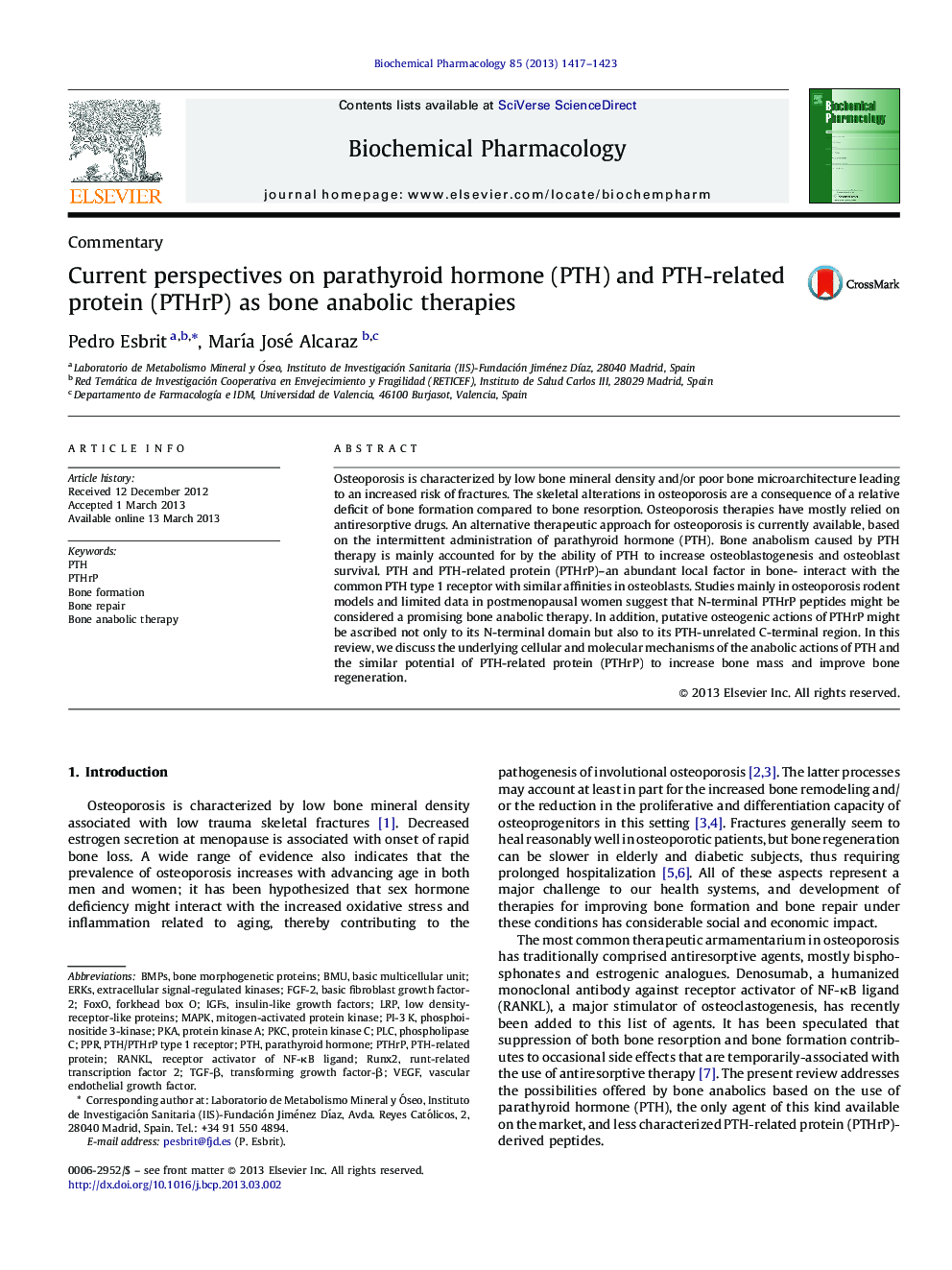| Article ID | Journal | Published Year | Pages | File Type |
|---|---|---|---|---|
| 2512729 | Biochemical Pharmacology | 2013 | 7 Pages |
Osteoporosis is characterized by low bone mineral density and/or poor bone microarchitecture leading to an increased risk of fractures. The skeletal alterations in osteoporosis are a consequence of a relative deficit of bone formation compared to bone resorption. Osteoporosis therapies have mostly relied on antiresorptive drugs. An alternative therapeutic approach for osteoporosis is currently available, based on the intermittent administration of parathyroid hormone (PTH). Bone anabolism caused by PTH therapy is mainly accounted for by the ability of PTH to increase osteoblastogenesis and osteoblast survival. PTH and PTH-related protein (PTHrP)–an abundant local factor in bone- interact with the common PTH type 1 receptor with similar affinities in osteoblasts. Studies mainly in osteoporosis rodent models and limited data in postmenopausal women suggest that N-terminal PTHrP peptides might be considered a promising bone anabolic therapy. In addition, putative osteogenic actions of PTHrP might be ascribed not only to its N-terminal domain but also to its PTH-unrelated C-terminal region. In this review, we discuss the underlying cellular and molecular mechanisms of the anabolic actions of PTH and the similar potential of PTH-related protein (PTHrP) to increase bone mass and improve bone regeneration.
Graphical abstractFigure optionsDownload full-size imageDownload as PowerPoint slide
